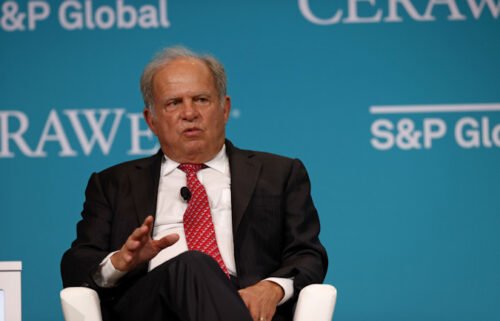Here’s why the Fed thinks it can cut rates in 2024
New York (CNN) — On Wall Street, interest rate cuts have recently become less a question of if, but rather, when.
The shift came last week after all but two of 19 Federal Reserve officials predicted the central bank would cut interest rates at least once in the coming year, according to the Fed’s latest Summary of Economic Projections. While most officials believe there will be a total of three rate cuts in 2024, one Fed official is penciling in five.
Exhilarated by these new foretellings, investors sent markets soaring, with the Dow Jones Industrial Average notching several new record closes as of December 13.
But even though rate cuts are generating a lot of buzz with investors, they’re not a sure shot by any means. As the SEP notes, Fed officials’ projections on the future path of interest rates are “subject to considerable uncertainty.”
That’s because their assessments of the appropriate monetary policy to apply in the future depend on how the economy performs, Or, in their terminology, they will review “the totality of the data.” For instance, if inflation runs a lot hotter than officials expect, the Fed may opt to pause or raise interest rates instead.
But if the majority of Fed officials’ predictions turn out to be true and the central bank does start cutting interest rates next year, what would the justification be?
A look back at recent rate cuts
The last time the Fed cut rates was at the onset of the pandemic. Over a series of emergency meetings in March 2020, the Fed took the unprecedented step of slashing interest rates by 1.25 points, which brought rates to near-zero levels. The Fed explained the cuts were needed to counter the dangers Covid posed to the economy.
Before the pandemic, the Fed cut rates in 2019 as the trade war between the United States and China was heating up. The first of three cuts that year came in July.
Fed Chair Jerome Powell explained that the quarter-point cut was necessary to “insure against downside risks from weak global growth and trade policy uncertainty [and] to help offset the effects these factors are currently having on the economy.”
Powell characterized the first cut and the subsequent ones that year as “midcycle adjustments,” meaning this was not the start of a lengthy round of rate cuts, but rather a minor tweak to reroute the economy. That’s very different from what the Fed would do “when there’s a recession or a very severe downturn,” Powell said at the central bank’s July 2019 post-meeting press conference.
Why does the Fed cut rates?
The two most recent cases of rate cuts highlight two primary reasons the Fed lowers its benchmark lending rate.
The Fed cuts rates “when something goes wrong in the economy,” said Justin Weidner, a US economist at Deutsche Bank. That was the premise for rate cuts that began in 2007, 2001 and 1990, which marked the start of different recessions.
The Fed also cuts preemptively in response to data that shows the economy is losing steam — or after events like 9/11 “that could be thought to generate weakness across the economy,” said Michael Gapen, head of US economics at Bank of America Securities.
Rate cuts don’t always have bad roots
If the Fed cuts rates next year, there’s a good chance it’s not because there’s an imminent risk of a recession or a need to insure against one, Gapen told CNN.
“This cutting could be different than any other time,” he said. In his view, the Fed would cut next year because inflation has moved closer to the central bank’s 2% target.
If that pans out, the Fed’s current target interest rate level will be overly restrictive and put a drag on the economy, Gapen added.
Like Powell, Weidner and his team of economists at Deutsche Bank aren’t ruling out a recession in the coming year, though. Weidner’s team predicts the unemployment rate will rise to 4.6% by the third quarter of next year from the current 3.7% rate as a result of a drop in the nation’s real gross domestic product.
“If that happens, then that’s a bad scenario,” he said, adding that it would merit rate cuts.
The-CNN-Wire
™ & © 2023 Cable News Network, Inc., a Warner Bros. Discovery Company. All rights reserved.



